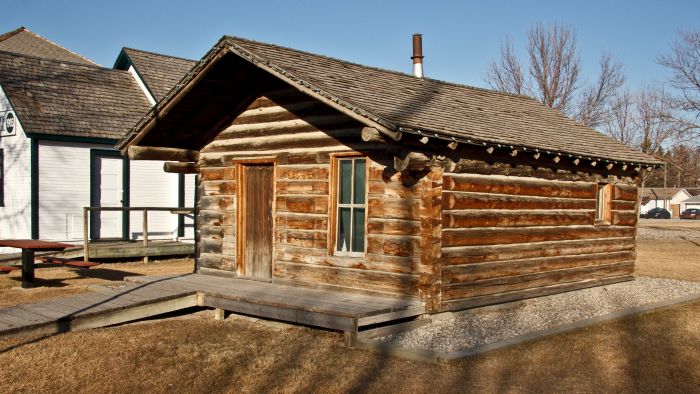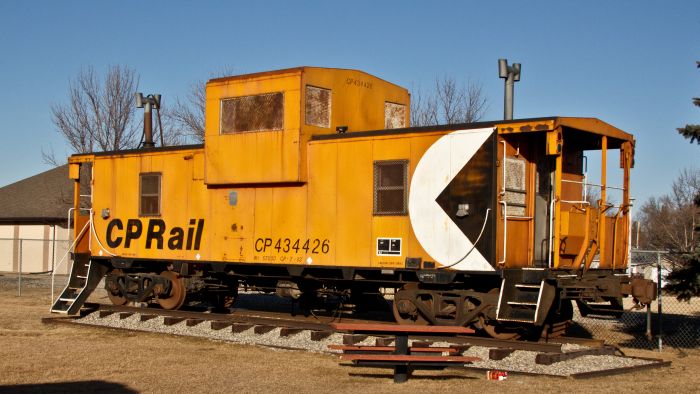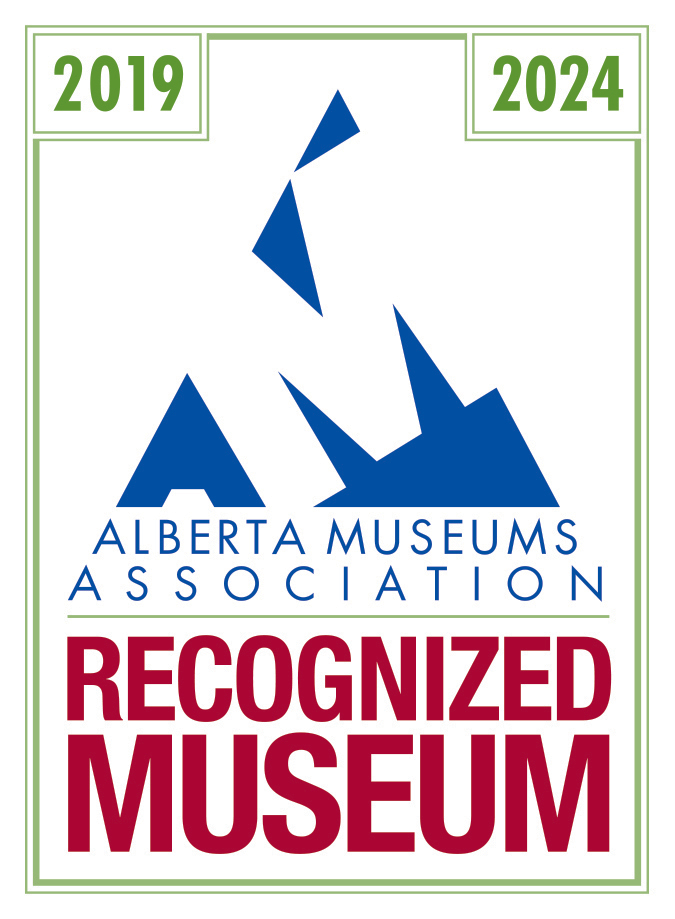Museum Buildings & Facilities
The Claresholm & District Museum is comprised of a 1912 sandstone CPR Train Station, an 8000 sq/ft Exhibit Hall, a 1903 School House, a 1920s Log Cabin and a CPR Caboose. The rich history of Claresholm and area is represented in the Museum’s large collection of over 15,000 artifacts. To see a listing of exhibits click here.
 CPR Station
CPR Station
At the Claresholm & District Museum, the beautiful sandstone station is an important part of our community. The station was originally part of Calgary’s 9th Avenue C.P.R. depot built in 1886. When the Calgary station was dismantled in 1910, one part was sent to Claresholm and rebuilt, opening in 1912. The station’s special history and impressive architecture has been recognized by Provincial Historic Resource designation in 2004.
Exhibit Hall
A new Exhibit Hall was constructed in 2008 and had its official opening in the fall of 2010. This building houses nearly 8,000 square feet of interpretive exhibits and serves the community through school programs, special events, research services and archival holdings. The Exhibit Hall is situated directly east of the CPR Station building.
 Claresholm’s First School
Claresholm’s First School
Claresholm’s original one-room school, built in January 1903 on land a couple of blocks east of the station, was donated to the museum by the Willow Creek School Division and relocated to the museum site in 1967. This small school served Claresholm for just a few years. Claresholm grew rapidly, from one family in 1901 to about eight hundred people in 1905, and a much larger school was soon needed.
In 1907 the new Claresholm Public School was completed on Second Street West and 55th Avenue. It was an impressive three story brick building, with two floors of classrooms and an auditorium on the third floor. The little one-room school was then sold to the Prairieville School District, and moved to a site eighteen miles northeast of Claresholm. It served as the Prairieville School until school centralization in 1939. Like all rural schools, it was also used by the community for church services and as a community hall, uses that continued until it was donated to the Claresholm Museum. Today, Claresholm’s first school, appropriately furnished, re-creates the atmosphere of an early rural school.
 Critoph’s Cabin c.1920s
Critoph’s Cabin c.1920s
In 1977 the Willow Creek Historical Association donated a log cabin to the museum. The log cabin was built in the late 1920s by Bard Critoph on his farm a few miles southwest of Claresholm near Willow Creek. In 1960 Dick and Jessie Mouser, owners of the land at that time, donated the cabin to the newly formed Willow Creek Historical Association to be used as the society’s museum. In 1976 the Historical Association decided that the cabin would reach a wider audience if it was placed on the museum site. The log cabin, appropriately furnished, now serves as an interpretive display that illustrates an earlier time in our history. In 2003 restoration work was completed to replace many of the logs that had deteriorated, thus preserving this important part of our heritage for many more years.
 CPR Caboose
CPR Caboose
They are not on the rails anymore, but you can still see a caboose at the Claresholm & District Museum.
CPR Speeder Car and Shed
 In the summer time keep your eye out for our yellow CPR speeder car on the piece of track reinstalled behind the CPR Station museum building where the tracks originally ran. In the winter time it is stored in its own shed adjacent to the track, just how the CPR used to do it.
In the summer time keep your eye out for our yellow CPR speeder car on the piece of track reinstalled behind the CPR Station museum building where the tracks originally ran. In the winter time it is stored in its own shed adjacent to the track, just how the CPR used to do it.
 Louise McKinney Memorial Gardens
Louise McKinney Memorial Gardens
The gardens in front of the CPR station that border HWY 2 are created and maintained by the Friends of the Museum Society.
Jim Mouser Memorial Rose Garden
 This beautiful garden located in front of the Exhibit Hall features 15 different varieties of roses and is also maintained by the Friends of the Museum Society.
This beautiful garden located in front of the Exhibit Hall features 15 different varieties of roses and is also maintained by the Friends of the Museum Society.


